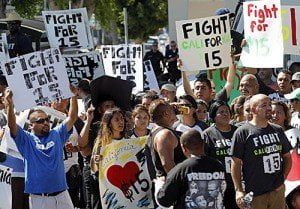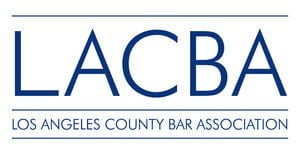What is “Lynching” in California?
Some laws stand the test of time without changes. Others need to be updated to maintain their relevancy in modern life.

California 405(a) PC is an example of the latter. This statute, once referred to as California’s lynching law, was updated in 2015 in order to remove the term “lynching” from the penal code. The modern understanding of this law is that it prohibits the taking of an individual from the lawful custody of police by means of a riot.
Historically, lynching was a hate crime associated with murder—typically by hanging—of an individual because of his or her race. However, under California Penal Code 405(a), lynching is described as the riotous taking of an individual from legal police custody.
Most protests in Southern California tend to be peaceful. But any time large crowds and police interact, there is potential for a violent conflict to break out.
To eliminate the confusion between the more common concept of lynching and California 405(a) PC, Governor Jerry Brown signed a bill on July 2, 2015 to eliminate the word “lynching” from the penal code. Today, 405(a) PC is referred to as the crime of taking an individual—by means of a riot—from lawful custody, and is classified as a felony offense.
Of particular importance to this statute is the concept of “riot”. Under state law, a riot involves two or more people who act together to:
Utilize violence or force.
Disturb the peace.
Threaten to utilize violence or force with the immediate capability to carry out said threat.
Elements of the crime
To obtain a conviction under 405(a) PC, all of the following elements must be proven beyond a reasonable doubt:
The defendant willfully and knowingly participated in a riot.
The defendant removed another individual from a police officer’s lawful custody.
The defendant knew or should have reasonably known that the individual from whom the “taking” occurred was a police officer engaged in the lawful performance of their duties.
Related offenses
Anyone who is charged with violating 405a PC potentially may also be charged with:
69 PC – resisting an executive officer
404 PC – rioting
6 PC – inciting a riot
405 PC – participating in a riot
407 PC – unlawful assembly
4550 PC – rescuing a detainee from lawful custody
Additionally, individuals can be charged with attempted “lynching” under 405(a) PC.
It’s also worth noting, not only can the rioters face prosecution, but the detainee can also be charged in their own “lynching,” especially if they incited and/or bolstered the riot, as the First District Court of Appeals held in In re: Anthony J. (1999), when the defendant incited a group of bystanders to help free him from handcuffs applied after the execution of a lawful arrest warrant.
Criminal penalties
Violation of 405(a) PC is a felony punishable by two to four years in prison, as specified by 405(b) PC.
Participating in a riot and inciting a riot, by themselves, are misdemeanors punishable by up to one year in county jail. Rescuing a detainee (4550 PC) is a wobbler, meaning that it can be charged as a misdemeanor or felony, depending upon the facts of the case and the defendant’s prior criminal history. As a felony, rescuing is punishable by up to three years in state prison.
But under 405(a)/405(b) PC, the crime formerly known as lynching has a longer maximum sentence than merely rescuing a detainee, due to the nature of a riot, which is extremely dangerous to the police and public.
Legal defenses
A conviction under 405(a) is a felony which carries substantial penalties; anyone accused of this crime should seek advice from a qualified criminal defense attorney. With that said, there are two common legal defenses to charges under this statute:
Lack of knowledge
The defendant did not know, or could not have reasonably known the person against whom they acted was a police officer. For example, if members of a motorcycle club saw two individuals struggling—one of whom was a fellow member—but did not know that the other was an undercover police officer, attempting to help their friend does not fulfill the necessary element of knowledge which is required to obtain a successful conviction under 405(a).
Unlawful arrest
This defense hinges upon one of the elements of the crime, which is “taking” from a police officer engaged in the lawful performance of their duties. If the defense can show that the arrest or detention of the person “taken” was not lawful, the defendant must be found not guilty of 405(a).










